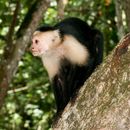ar
الأسماء في صفحات التنقل


The capuchin monkeys, formerly all placed in the genus Cebus, are now often separated into two genera, Cebus (for the gracile or untufted capuchins) and Sapajus (for the robust or tufted capuchins). Although the distinction between these two groups was well established by the mid-20th century, the delineation of species and subspecies has been less stable.Until the early 21st century, however, four species of capuchins were generally recognized: White-faced Capuchin (C. capucinus), White-fronted Capuchin (C. albifrons), the Weeper Capuchin (C. olivaceus or nigrovittatus), and a single robust species, the Brown Capuchin (C. apella). Within these species, various subspecies were often recognized. Based on more recent work, however, including molecular phylogenetic studies, Rylands and Mittermeier (2013) recognized 14 species of Cebus (and eight Sapajus), with the clear understanding that this is unlikely to be the last word on capuchin taxonomy as additional samples and data are acquired and analyzed. They recognized two species of white-faced capuchins, the Colombian White-faced Capuchin (C. capucinus), occurring from northwestern Ecuador to eastern Panama, and the Panamanian White-faced Capuchin (C. imitator), ocurring from western Panama to Honduras (and possibly Belize). See Rylands and Mittermeier (2013) for a review of capuchin biology and systematics and references to key literature.